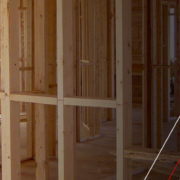What does COP27 mean for construction?
November saw the Government of the Arab Republic of Egypt host the 27th session of the Conference of the Parties of the UNFCCC (COP27), with a view to building on previous successes and paving the way for future ambition to effectively tackle the global challenge of climate change.
The Building to COP27, a group of sustainability-focused built environment NGOs and organisations, is working to position the built environment as a critical sector to achieve the needed transition to a resilient and zero emissions future at COP conferences. The group aims to raise awareness of the impact that the building sector can have while pointing out that more drastic measures need to be taken, as most countries do not include full building decarbonization targets, and certain areas, such as building materials are under-addressed.
Buildings are responsible for almost 40% of global energy-related carbon emissions and 50% of all extracted materials. The building and construction sector’s demand on natural resources accelerates climate change, and inefficient, unhealthy buildings negatively impact human health and wellbeing.
By 2050:
- 1.6 billion urban dwellers will be regularly exposed to extreme high temperatures
- Over 800 million people living in more than 570 cities will be vulnerable to sea level rise and coastal flooding
- By 2060 the world’s building stock will double and almost 70% of the global population is projected to live in urban areas
By 2030, efficient buildings will be an investment opportunity worth $24.7 trillion Despite this, under $3 of every $100 spent on new construction goes to efficient buildings. Out of the 186 countries that have submitted Nationally Determined Contributions (NDCs) to the United Nations Framework Convention on Climate Change (UNFCCC), 136 countries mention buildings, 53 countries mention building energy efficiency, and 38 specifically call out building energy codes. Most countries do not include full building decarbonisation targets and certain areas such as building materials are under addressed.
All countries will also need to include full building decarbonisation targets, concrete policies and measures and related implementation mechanisms in their NDCs.
- 1,000 cities and at least 20% of the largest built environment businesses by revenue committed to the UN’s Race to Zero.
- The sector’s stakeholders unite behind a single voice and ambition towards shared goals:
- By 2030, 100% of new buildings must be net-zero carbon in operation and embodied carbon must be reduced by at least 40%, and by 2050, all new and existing assets must be net zero across the whole life cycle (see UNFCCC Human Settlements Pathway).
For the built environment to contribute its fair share of emissions reductions and stay within the 1.5°C degree warming limit, there needs to be a halving of emissions by 2030 and net zero over the full life-cycle by or before 2050. More specifically, this means that by 2030 all new buildings should be “net zero carbon” in operation (no emissions from building energy use) and embodied carbon needs to be reduced by at least 40%.
Building and infrastructure projects have extended lead times. It can take anywhere from a few years to 15-20 years to complete a project, from the initial planning stage to execution and operational start. This means that “2030 is today”. A project that is entering the planning stage in 2022-23 needs to target the required carbon performance for 2030 imperatively.
Today, only very few building projects calculate and report their full carbon footprint, which is a critical practice if we want to understand how to reduce all emissions over the life cycle of buildings. Yet, if owners, developers and investors start requesting Whole Life Carbon assessments, architecture, engineering and construction firms offer them in all their projects, and cities require them in their permitting and procurement procedures, then we could rapidly build up the evidence allowing for benchmarking and target setting and enable everyone to act to achieve them.
During this year’s conference, the Clean Construction Accelerator was announced, an act that hopes to support the built environment sector in halving emissions by 2030 for all new buildings and infrastructure projects.
There are many positives already. The percentage of construction companies, by revenue, that have joined the Race to Zero has doubled since COP26. Building on this over the next few years is going to be key to achieving the targets/ We look forward to COP28 to see progress.
Sources: archdaily.com / buildingtocop.org













Leave a Reply
Want to join the discussion?Feel free to contribute!